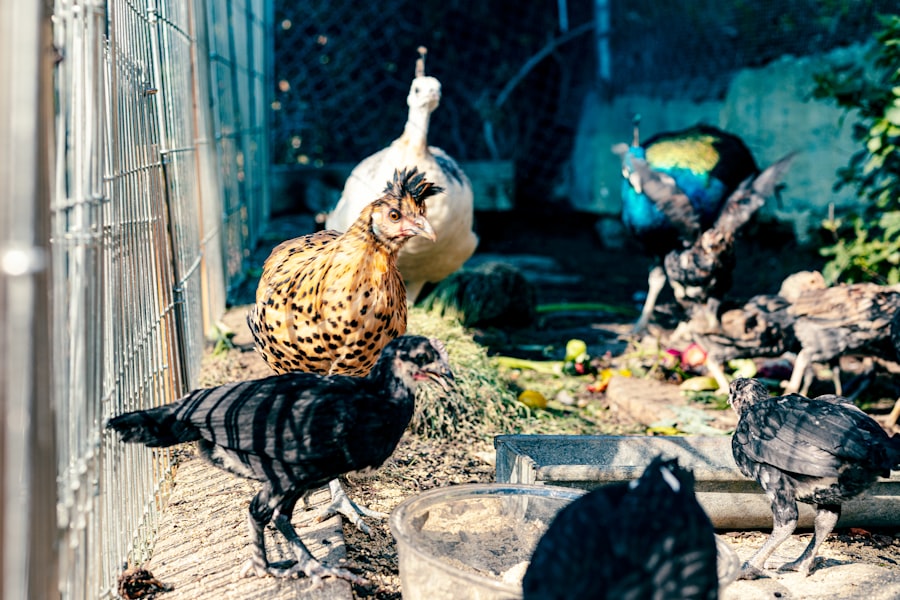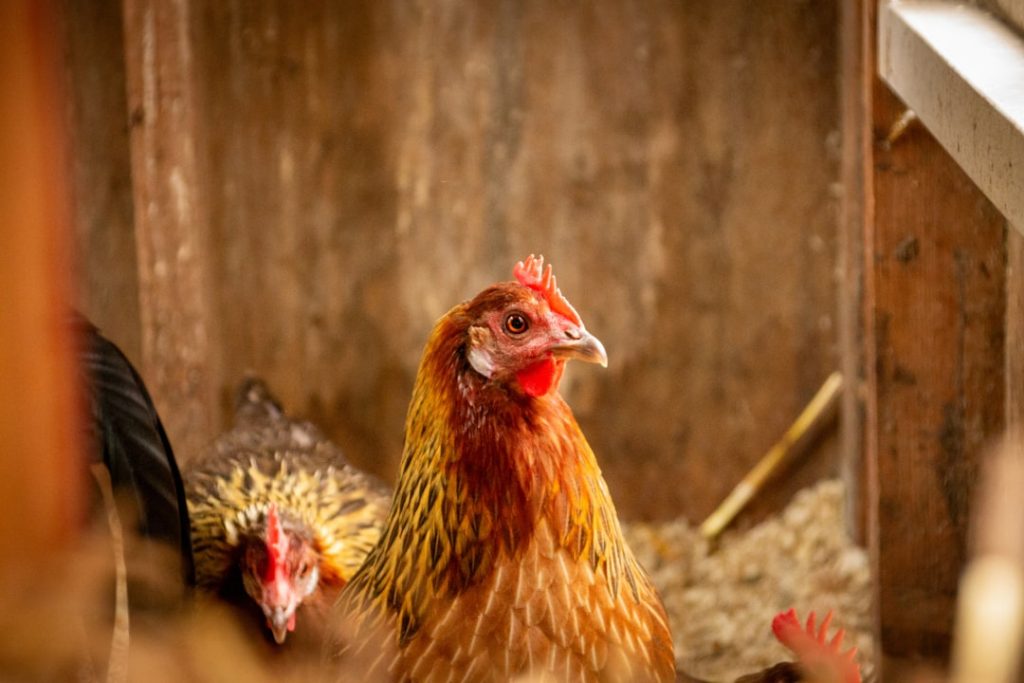Chicken keeping has experienced a surge in popularity in recent years, driven by a growing interest in sustainable living practices and home food production. These versatile birds offer multiple benefits, including a consistent supply of fresh eggs, natural pest control for gardens, and organic fertilizer production. Chicken keeping is adaptable to various living situations, from rural homesteads to urban backyards, making it accessible to a wide range of individuals.
However, successful chicken husbandry requires careful consideration of housing and space requirements to ensure the health and well-being of the flock. Proper planning and preparation are essential for creating a suitable environment that meets the needs of chickens while complying with local regulations and maintaining good relationships with neighbors.
Table of Contents
- 1 Housing Requirements for Chickens
- 2 Space Requirements for Chickens
- 3 Considerations for Free-Range Chickens
- 4 Factors to Consider for Urban Chicken Keeping
- 5 Tips for Maximizing Space for Chickens
- 6 Conclusion and Summary of Space Requirements for Keeping Chickens
- 7 FAQs
- 7.1 What is the minimum space needed to keep chickens?
- 7.2 How much space do chickens need to roam freely?
- 7.3 What are the consequences of overcrowding chickens?
- 7.4 What factors should be considered when determining the space needed for chickens?
- 7.5 Are there any regulations or guidelines for the space needed to keep chickens?
Key Takeaways
- Keeping chickens can be a rewarding and sustainable hobby for many people, providing fresh eggs and a connection to nature.
- Proper housing for chickens is essential, providing protection from predators and the elements, as well as a comfortable environment for laying eggs.
- Chickens require adequate space to roam and forage, with a general guideline of 2-3 square feet per bird inside the coop and 8-10 square feet per bird in an outdoor run.
- Free-range chickens have the benefit of natural foraging and exercise, but require careful consideration of predator protection and potential impact on surrounding areas.
- Urban chicken keeping requires special attention to local regulations, noise and odor control, and providing a suitable environment for chickens in a limited space.
- Maximizing space for chickens can be achieved through thoughtful coop design, vertical space utilization, and creative use of outdoor areas for foraging and exercise.
- In conclusion, providing adequate housing and space for chickens is essential for their well-being and productivity, and careful consideration of these factors is crucial for successful chicken keeping.
Housing Requirements for Chickens
The Coop: A Safe Haven
First and foremost, chickens need a safe and secure coop to protect them from predators and the elements. The coop should be well-ventilated to prevent moisture buildup and should provide at least 2-3 square feet of space per chicken. It’s important to also include roosting bars for the chickens to perch on at night, as well as nesting boxes for them to lay their eggs. Additionally, the coop should have easy access for cleaning and egg collection.
Coop Materials and Security
When it comes to materials, the coop can be made from wood, metal, or plastic, but it’s important to ensure that it is sturdy and predator-proof. The coop should have a secure door that can be closed at night to keep the chickens safe from nocturnal predators.
The Outdoor Run: Space to Roam
In addition to the coop, chickens also need access to an outdoor run where they can stretch their legs and scratch around for bugs and plants. The run should provide at least 10 square feet of space per chicken and should be covered with wire mesh to prevent predators from getting in. It’s important to also provide some form of shelter within the run, such as a covered area or shade structure, to protect the chickens from the sun and rain.
Space Requirements for Chickens

Space requirements for chickens are crucial for their overall health and happiness. Chickens that are overcrowded can become stressed, aggressive, and more susceptible to disease. As a general rule of thumb, each chicken should have at least 4 square feet of space in the coop and 10 square feet of space in the outdoor run.
This allows them to move around freely, engage in natural behaviors like dust bathing and foraging, and establish a pecking order without feeling cramped or confined. In addition to physical space, it’s important to consider vertical space within the coop. Chickens are natural roosters and prefer to perch off the ground at night.
Providing enough roosting space for each chicken will help them feel secure and comfortable while they sleep. Nesting boxes should also be provided within the coop, with one box for every 3-4 hens. These boxes should be placed in a quiet, dark corner of the coop to encourage egg laying and provide a sense of privacy for the hens.
Overall, providing adequate space for your chickens is essential for their physical and psychological well-being. By ensuring that they have enough room to move around, socialize, and engage in natural behaviors, you can help create a happy and healthy environment for your flock.
Considerations for Free-Range Chickens
Free-ranging chickens have the opportunity to roam and forage for food, which can provide them with a more natural and varied diet. However, free-ranging also comes with its own set of considerations. When allowing chickens to free-range, it’s important to ensure that they have access to a safe and secure outdoor area that is protected from predators.
This can be achieved through the use of fencing or netting around the perimeter of the free-range area. It’s also important to consider the impact of free-ranging on your property and surrounding areas. Chickens have a tendency to scratch and peck at the ground, which can lead to damage to gardens, lawns, and flower beds.
To mitigate this, it’s important to provide designated free-range areas that are away from sensitive areas of your property. Additionally, it’s important to consider the potential impact of free-ranging on neighboring properties and wildlife. Ensuring that your chickens do not cause disturbances or damage outside of your property is essential for maintaining positive relationships with your neighbors and local wildlife.
Overall, free-ranging can provide numerous benefits for chickens, including increased exercise, mental stimulation, and access to a more varied diet. However, it’s important to carefully consider the potential challenges and impacts of free-ranging before allowing your chickens to roam freely.
Factors to Consider for Urban Chicken Keeping
Urban chicken keeping comes with its own set of unique challenges and considerations. In urban areas, space is often limited, and zoning regulations may restrict the number of chickens you can keep or dictate where you can house them. Before embarking on urban chicken keeping, it’s important to familiarize yourself with local regulations and obtain any necessary permits or approvals.
In addition to zoning regulations, it’s important to consider the noise and odor that chickens may produce in an urban setting. Roosters, in particular, can be noisy and may not be allowed in some urban areas due to noise ordinances. Ensuring that your coop is well-maintained and regularly cleaned can help minimize odors and prevent disturbances to neighbors.
Another factor to consider for urban chicken keeping is predator control. Urban areas may still have predators such as raccoons, rats, or neighborhood dogs that could pose a threat to your chickens. It’s important to take measures to secure your coop and run against potential predators, such as using hardware cloth instead of chicken wire and ensuring that all doors and openings are securely latched.
Overall, urban chicken keeping requires careful consideration of local regulations, noise and odor control, and predator protection. By being mindful of these factors, you can successfully keep chickens in an urban setting while maintaining positive relationships with your neighbors.
Tips for Maximizing Space for Chickens

Vertical Space Utilization
One effective approach is to build up rather than out, making the most of the vertical space within the coop. This can be achieved by using vertical roosting bars or stacking nesting boxes, ensuring efficient use of the available space.
Dual-Purpose Structures and Furniture
Another tip is to utilize dual-purpose furniture or structures. For instance, building a chicken coop with a green roof that serves as both a living space for the chickens and a garden area for growing herbs or vegetables can be an excellent way to maximize space.
Efficient Outdoor Space Use
In addition to optimizing the coop’s interior, it’s essential to utilize outdoor space efficiently. Consider using portable chicken runs or chicken tractors that can be moved around the yard, allowing the chickens to access fresh grass and insects while preventing overgrazing in one area. By incorporating movable or collapsible elements into the coop design, you can reconfigure the space as needed or easily expand or contract the living area for your chickens.
By implementing these creative and strategic tips, you can provide a comfortable and enriching environment for your flock while making the most of the available space.
Conclusion and Summary of Space Requirements for Keeping Chickens
In conclusion, providing adequate housing and space for chickens is essential for their health and well-being. Whether you’re keeping chickens in a rural or urban setting, it’s important to ensure that they have a safe and secure coop with enough room to move around freely. Free-ranging can provide numerous benefits for chickens but requires careful consideration of potential challenges and impacts.
Urban chicken keeping comes with its own set of unique considerations, including zoning regulations, noise control, odor management, and predator protection. Maximizing space for chickens requires creativity and strategic planning, including utilizing vertical space, dual-purpose structures, and efficient outdoor space utilization. By carefully considering these factors and implementing appropriate strategies, you can create a comfortable and enriching environment for your flock while maintaining positive relationships with neighbors and local wildlife.
Ultimately, providing adequate space for your chickens is essential for their physical and psychological well-being, allowing them to thrive and flourish in their environment.
If you’re considering keeping chickens, you may be wondering how much space you need to provide for them. According to a helpful article on Poultry Wizard, it’s important to ensure that each chicken has at least 4 square feet of space in the coop and 10 square feet in the run. For more tips on how to properly insulate a chicken coop, check out this article on Poultry Wizard’s website.
FAQs
What is the minimum space needed to keep chickens?
The minimum space needed to keep chickens is 2-3 square feet per bird inside the coop, and 8-10 square feet per bird in an outdoor run.
How much space do chickens need to roam freely?
Chickens need at least 10 square feet of space per bird to roam freely and exhibit natural behaviors.
What are the consequences of overcrowding chickens?
Overcrowding chickens can lead to stress, aggression, and an increased risk of disease and parasites. It can also result in a decrease in egg production and overall health of the birds.
What factors should be considered when determining the space needed for chickens?
Factors to consider when determining the space needed for chickens include the breed of the chickens, their size, the climate, and the amount of time they will spend in the coop and outdoor run.
Are there any regulations or guidelines for the space needed to keep chickens?
Regulations and guidelines for the space needed to keep chickens vary by location. It is important to check with local authorities or agricultural extension offices for specific requirements in your area.
Meet Walter, the feathered-friend fanatic of Florida! Nestled in the sunshine state, Walter struts through life with his feathered companions, clucking his way to happiness. With a coop that’s fancier than a five-star hotel, he’s the Don Juan of the chicken world. When he’s not teaching his hens to do the cha-cha, you’ll find him in a heated debate with his prized rooster, Sir Clucks-a-Lot. Walter’s poultry passion is no yolk; he’s the sunny-side-up guy you never knew you needed in your flock of friends!







